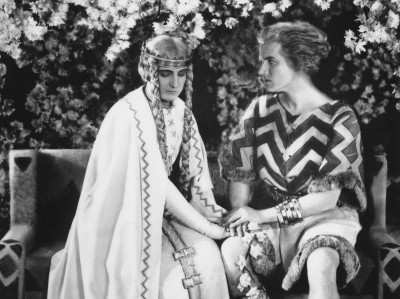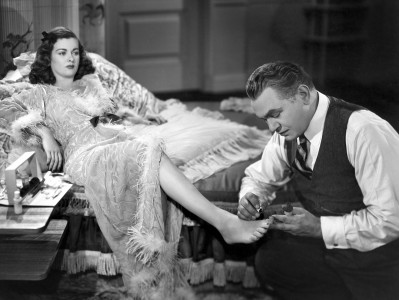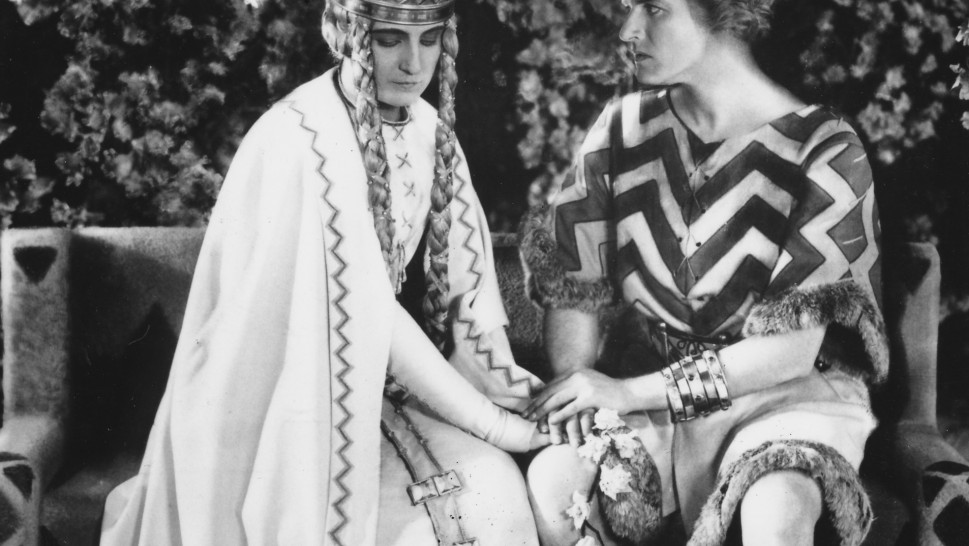
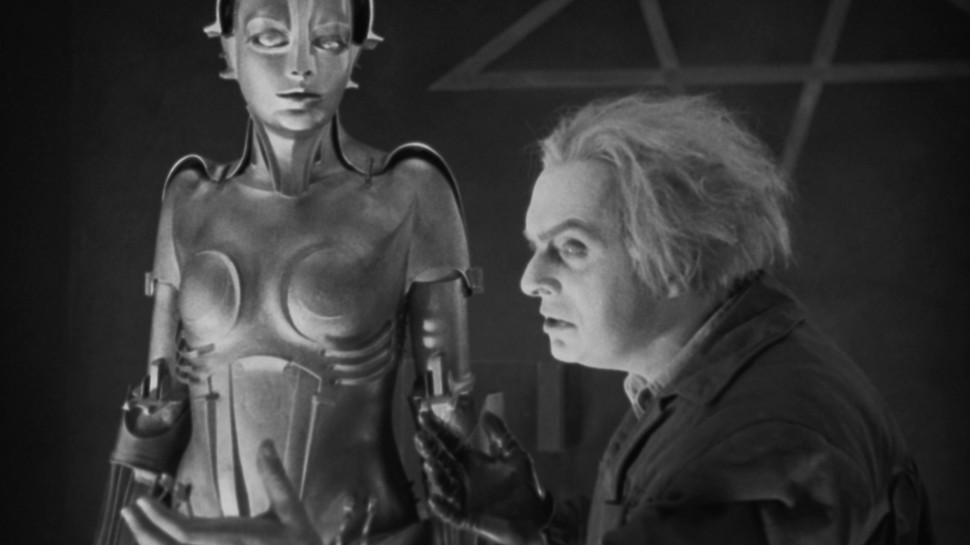
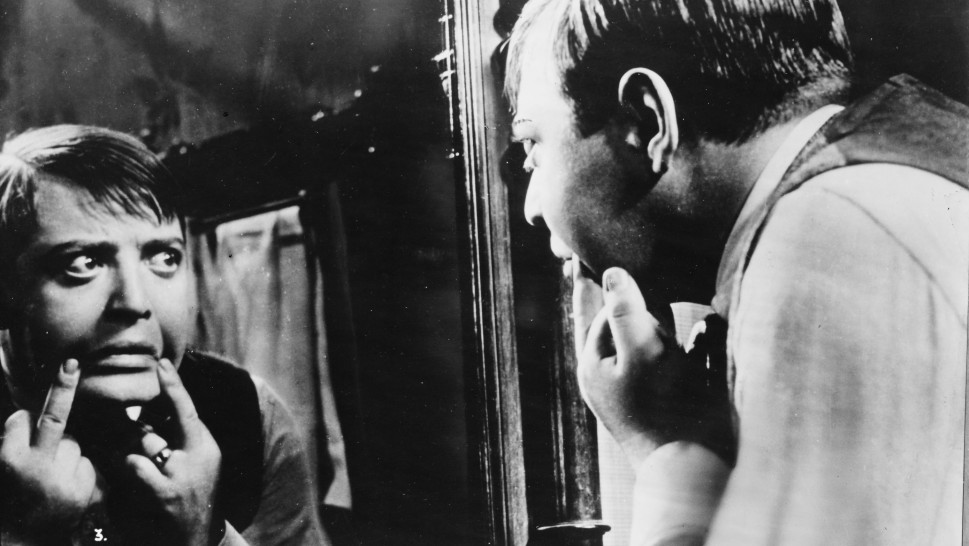
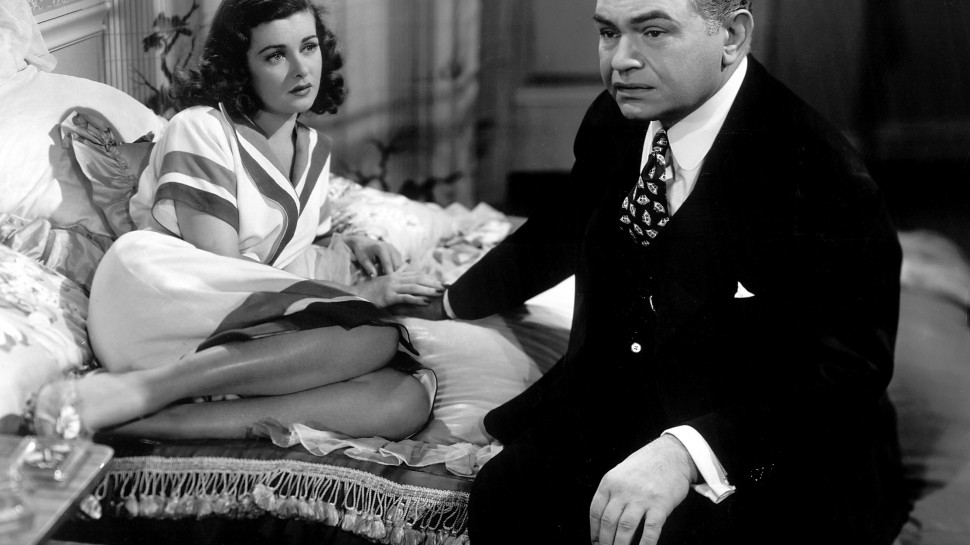
The Complete Fritz Lang
“For me, cinema is a vice. I love it infinitely.” — Fritz Lang
More than a career retrospective, the Harvard Film Archive’s Complete Fritz Lang unrolls as a visionary panorama of what Max Weber called the “disenchantment of the world.” Lang’s purview encompasses police states and criminal networks, surveillance systems and media manipulations, information economies and mob rule. From Metropolis’ totemic skyscrapers to While the City Sleeps’ glassy television studios, M’s aerial view of society’s response to a shocking crime to The Big Heat’s hard-boiled report on a criminal society, Lang’s films grasp the twentieth century’s organizing structures of power and perception through an exquisitely controlled style owing more to architectural design than literary imagination. As Frieda Grafe writes, “Lang is not interested in a reproduction of a reality one has already seen. He wants to reveal, with his instrument, the real power of forms.”
Born into a solidly bourgeois family in fin-de-siècle Vienna, Fritz Lang (1890 - 1976) studied art and relished Europe’s café culture as a young man. He enlisted in the Austrian army in 1915 and began writing film scripts during a period of convalescence. Several sold to influential producer Joe May who Lang followed to Berlin in time for the armistice. With its air of experimentation and decadence—to say nothing of its burgeoning film industry—Lang flourished in the Weimar Republic. Something of the epoch’s essential insecurity would remain lodged in all his films, attuned as they are to the underlying instability of identity, power relations, and society itself. With the key collaboration of his wife and scenarist Thea von Harbou, Lang vaulted to the forefront of German directors on the strength of mythic epics (Destiny, Die Nibelungen) and sharply modern crime films (The Spiders, Dr. Mabuse, the Gambler). After nearly bankrupting the Ufa studio with Metropolis, Lang went independent for Spies before boldly venturing into the sound era with two inexhaustible studies of society in crisis (M, The Testament of Dr. Mabuse). The second of these was completed as both the Weimar Republic and Lang’s marriage crumbled: The Testament of Dr. Mabuse was ultimately banned by Goebbels’ Propaganda Ministry for presenting criminal acts “so detailed and fascinating” as to tempt copycats—even as the Nazis themselves seemed to be following the film’s script by taking advantage of the Reichstag Fire to secure their “empire of crime.”
The actual terms of the director’s exit from Nazi Germany remains the subject of controversy, but after a brief stopover in Paris, where he directed the delicate fantasy Liliom, he decamped for Hollywood. Within a year he emerged with one of the most caustic portraits of American demagoguery ever to be produced by a Hollywood studio (Fury), setting the tone for a remarkably corrosive body of work. The many distinct cycles of Lang’s Hollywood years advise against simply dividing his career into German and American periods. After the social-problem pictures of the 1930s (Fury, You Only Live Once, You and Me) came ardent anti-Nazi thrillers (Man Hunt, Hangmen Also Die!, The Ministry of Fear, Cloak and Dagger), psychological chamber pieces (The Woman in the Window, Scarlet Street, Secret Beyond the Door), media-obsessed exposés (The Blue Gardenia, The Big Heat, While the City Sleeps, Beyond a Reasonable Doubt), as well as more exotic specimens such as House by the River, Rancho Notorious, and Moonfleet. Lang zigzagged between different producers, studios, and genres during his Hollywood years, burning many bridges in the process. And yet in spite of the evident contraction from the dizzying heights of Metropolis to a crummy two-picture deal with RKO at the tail end of the studio era, Lang’s artistic powers remained undiminished. If anything, the late films are even more severe in their minimalist rigor, with form and theme perfectly aligned in what Jacques Rivette praised as Lang’s “world of necessity.”
“Around each of Lang’s meticulous images hovers the wispy presence of movies yet unmade,” Geoffrey O’Brien wrote of Spies, and Lang gave every appearance of being haunted by his own films, obsessively returning to key arrangements and figures. Style itself becomes a kind of specter looming over the particulars of any given plot—thus Lang’s supreme importance for the young directors of the nouvelle vague. “For Astruc, Rivette, Rohmer or Douchet, Lang is no longer just like other filmmakers,” wrote Raymond Bellour. “Not that he is the greatest; it’s quite another matter: Lang embodies, in a sense, the very possibility of cinema—what is ambiguously called direction or mise-en-scene.” In other words, the central conceptions of the politique des auteurs owe their life to the fierce lucidity and inexorable logic of Lang’s images.
That the director took extraordinary care in his direction is a matter of biographical record. A long line of former collaborators denounced Lang’s imperious behavior and mystifying exactitude as mere megalomania, yet from the comfort of our seats we might observe the revealing slippage that occurs between the mastery of the characters (often villainous, always illusory) and that of the film technique. Dr. Mabuse is only one of many onscreen proxies through which Lang tested the limits of control; his American protagonists were driven to manipulate perception for more narrowly personal reasons, namely the Langian yin-yang of guilt and revenge. One senses that Lang saw cinema as a vice precisely because it indulged this predilection for playing God, and yet as his films enter the Cold War era the desire for control begins to be overtaken by its opposite, the fear of losing one’s identity. The forty-year span of the Mabuse films is ever instructive: from the telepathic domination over time and space exerted in Dr. Mabuse, the Gambler to the panoptic surveillance mechanism employed in The Thousand Eyes of Dr. Mabuse, the figure of mastery is increasingly decentralized and dehumanized.
Lang’s is finally a cinema of questions: Who is the real protagonist? By what logic do these events cohere? Do these images reveal or conceal? The only certainty is conflict. A battery of French critics representing Cahiers du Cinéma once asked Lang, “Does guilt preoccupy you in your films?” He responded by reframing the question: “Let’s just call it the battle against destiny. I believe that it is necessary to fight destiny. It is the battle which is important, not the goal.” In the final analysis there can be no other explanation for Lang’s exceptional life in movies. — Max Goldberg, writer and frequent contributor to CinemaScope
Due to limited print availability, two of Fritz Lang’s early films The Wandering Image (Das wandernde Bild) and Four Around a Woman (Vier um die Frau) will be screened from rare archival 35mm copies later this year.





































